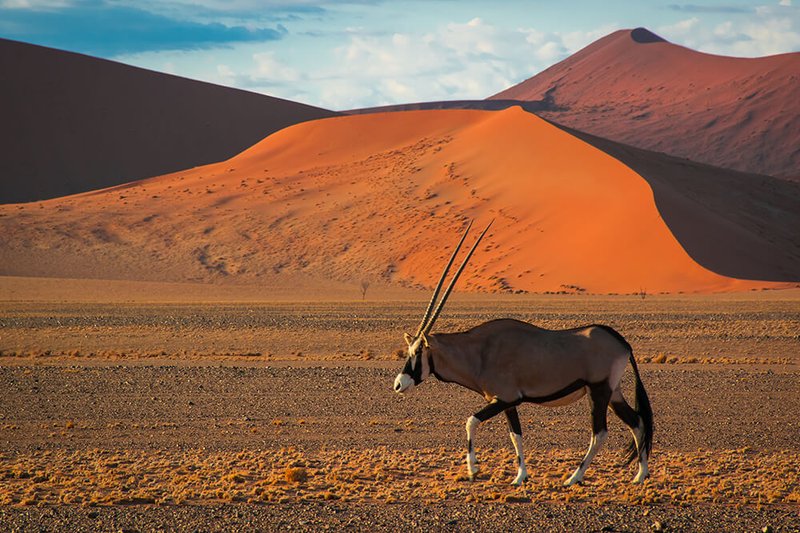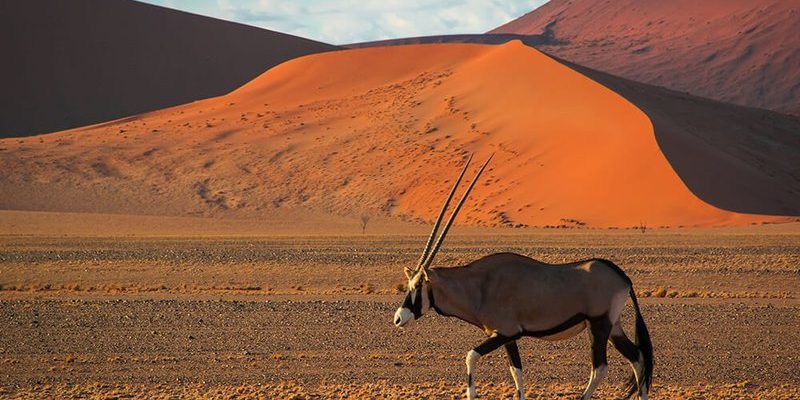
Understanding Oryx Species
There are several species of oryx, each adapted to its unique environment. The three most known types are the Gemsbok, the Arabian oryx, and the Scimitar-horned oryx.
– The Gemsbok mostly inhabits the Southern African savannas, where it’s often seen in herds.
– The Arabian oryx is a bit of a desert wanderer. Once on the brink of extinction, it has made a remarkable comeback thanks to conservation efforts. It thrives in the arid regions of the Arabian Peninsula.
– The Scimitar-horned oryx is rarely found in the wild today but was once common in North Africa’s steppes and semi-arid regions.
Each species has developed specific adaptations that help them maintain hydration and withstand extreme temperatures. The Gemsbok’s ability to tolerate high heat without drinking water is just one example of nature’s ingenuity!
The Habitats of Oryxes
Now, let’s talk about the types of habitats where you can typically find these magnificent animals. Oryxes are generally found in savannas, grasslands, and deserts.
– Savannas are open grasslands with scattered trees, giving oryxes room to roam and graze on the grasses. Here, they can find enough food to sustain themselves.
– In deserts, like the Arabian Desert, oryxes have adapted to deal with extreme heat and minimal water. They have specialized kidneys that allow them to conserve water, and they can often go for long periods without drinking.
– Grasslands, especially in Southern Africa, provide a rich source of grasses and shrubs that are crucial for their diet. The open spaces make it easier for them to spot predators and stay safe.
These varied habitats show just how adaptable oryxes are. They thrive where many other animals struggle, making them a testament to survival.
Geographic Distribution of Oryxes
When it comes to geographic distribution, oryxes have a fascinating story. The Gemsbok primarily roams Southern Africa, found in countries like Namibia, Botswana, and South Africa. Here, they enjoy a mix of grasslands and sparse bush, which suits their grazing habits.
On the other hand, the Arabian oryx is limited to parts of the Arabian Peninsula, particularly in areas like Oman and Saudi Arabia. Thanks to successful reintroduction programs, their populations have increased, allowing them to reclaim parts of their former range.
The Scimitar-horned oryx once roamed across a broader range in North Africa, particularly in countries like Tunisia, Algeria, and Libya. Sadly, due to habitat loss and overhunting, they are now extinct in the wild. However, conservation efforts continue in captivity, with hopes of eventually reintroducing them.
Challenges to Their Habitat
Despite their amazing adaptability, oryxes face several challenges in their habitats. One major issue is habitat loss. As human populations grow, land is often converted for agriculture or urban development. This leaves oryxes with less space to roam and find food.
Another challenge is climate change, which can alter their habitats significantly. Changes in rainfall patterns can impact the availability of grasslands and water sources, making survival tougher. You might even picture them as resourceful travelers, constantly searching for greener pastures in a changing landscape.
Lastly, poaching remains a critical threat for some oryx species, especially for the Scimitar-horned oryx, which was heavily hunted in the past. It’s a reminder of the importance of conservation efforts to protect these majestic creatures and their homes.
Conservation Efforts for Oryxes
Fortunately, many organizations and governments recognize the need to conserve the oryx population and their habitats. For instance, the Arabian oryx has been a success story in conservation. After nearly disappearing in the wild, it has been reintroduced in several protected areas thanks to breeding programs.
Conservationists are working tirelessly to restore their habitats, creating nature reserves where oryxes can thrive without the pressures of human encroachment. Education and awareness about these animals are also crucial. The more people learn about oryxes, the more they understand why it’s essential to protect them.
Even small actions, like supporting wildlife conservation organizations or visiting national parks, can make a difference. Every little bit helps ensure these magnificent creatures continue to roam the earth for generations to come.
Oryxes and Their Ecosystem
Oryxes play a vital role in their ecosystems. As grazers, they help maintain the balance between grasslands and shrublands. By feeding on grasses, they prevent overgrowth, allowing other plants to thrive and promoting biodiversity.
Their presence can also support other species in the ecosystem. For example, oryxes create grazing areas that are beneficial for smaller animals and insects. By understanding how oryxes interact with their environment, we can appreciate how interconnected life is in these habitats.
It’s fascinating to think about how one species can impact so many others. The oryx is not just a beautiful animal; it’s an important player in maintaining ecological balance.
Final Thoughts
So, where do oryxes live? They inhabit a range of environments, from the savannas of Southern Africa to the arid deserts of the Arabian Peninsula. Their adaptations and resilience are truly impressive, showcasing nature’s creativity in the face of challenges.
Understanding the habitat and distribution of oryxes not only highlights their incredible survival skills but also emphasizes the importance of conservation efforts. With ongoing protection and awareness, these remarkable animals can continue to thrive in their natural habitats, enriching our planet’s biodiversity.
Next time you think of the oryx, picture them gracefully moving across their landscapes, a testament to nature’s resilience, and remember that every effort counts in protecting these unique creatures and their homes.

